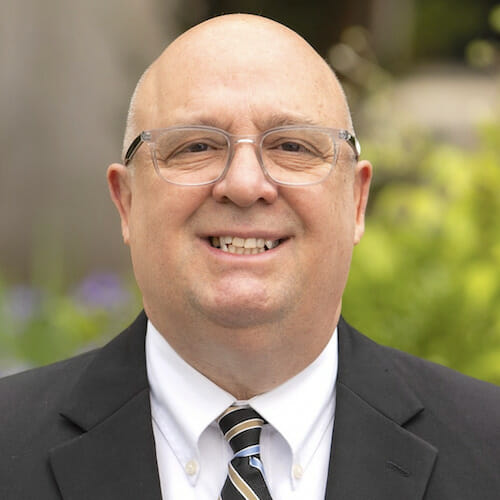
In 2006, I was able to visit many of the retirement communities associated with academic institutions at the time, including Stanford, Iowa State, Penn State, Duke, Indiana University and the University of Florida, among others. This was an experience from which it became apparent that a “next generation” model of senior living was primed to be a perfect fit for an aging US boomer population representing the most highly educated retirement demographic in history.
Not without issues
Also apparent were the difficulties in combining large, bureaucratic academic institutions catering to 20-year-old undergrads, with fast-paced senior living providers working to meet the needs of 80-year-old “seniors.” Differences in mission, culture, bottom line and even the concept of “time” resulted in projects requiring more than a decade to come to fruition, miscommunications, missed opportunities for connections, even financial difficulties and insolvency.
Academic institutions that believed such communities could serve as a form of “country club” for retired presidents, faculty and wealthy alums soon learned the health, wellness and service complexities that come with normal aging. Senior living providers hoping to tap into the university brand quickly learned that ignoring any further connection to the host would result in angry residents with a long list of demands.
Defining the model
Following the visits, I proposed a five-criteria model using characteristics drawn from the most successful communities — specifically those focused on what retirees were seeking, the best of academic and senior living resources, and incentivizing both parties to achieve long-term operational success.
Described further below, those meeting all five criteria could be classified as “University Based Retirement Communities” (UBRCs), those meeting three to four criteria as “University Linked Retirement Communities” (ULRCs) and those meeting one or two criteria as “University Affiliated Retirement Communities” (UARCs).
Although the criteria have been used by both existing and new university retirement communities in the years since, a side effect has been the nearly ubiquitous use of the term UBRC to describe all of them, regardless of how close their connection to the host institution. As a result, there remains significant confusion among retirees seeking to identify a community most likely to meet their lifestyle and needs. As significantly, a rush of academic institutions and senior living providers entering the sector have left even knowing the exact number of such communities, let alone how well they meet defined criteria, open to interpretation.
A national directory
Scheduled for rollout in time for the fall 2023 semester, universityretirementcommunities.com will offer the first national directory website for university retirement communities, along with information about the history, benefits, costs and criteria retirees can use when assessing senior living options.
Typical of such directories, basic listings will be provided free to communities identified as having a level of university or college connection. Featured listings will receive higher posting and will provide additional information and direct contact links, based on annual subscription.
‘Certified’ university retirement communities
Perhaps more significantly, the highest tier listings will come from the first national certification program for university retirement communities.
Offered through the website, communities seeking UBRC, ULRC or UARC status will be able to pursue certification based on submission of required documentation and a one-day site visit, measuring comparison with the five-criteria model, including:
1. Close proximity to the host academic institution: Typically one mile or less, to ensure easy access to both the community and campus environment for residents, students, faculty and staff.
2. A full continuum of independent living, assisted living, memory care and skilled nursing services, allowing residents, spouses or partners to remain in the community as service and care level needs increase.
3. Formalized programming between the community and the academic institution, defining resident-related benefits and access, and structuring of internship and related learning opportunities for students.
4. A formal business relationship between the community and the academic institution, such as a land lease, licensing agreement, contract medical or other health-related services, or other services establishing a mutual interest in the long-term success of the community.
5. A resident population that includes a least a 10% mix of academic institution alumni, retired faculty or staff, establishing the university culture as a component of community life.
Similar to J.D. Power or other voluntary consumer information offerings, certification will offer communities the highest level of differentiation in an otherwise undifferentiated sector. It additionally will provide opportunity for those below UBRC status to move up, and a road map for communities being planned. Multiple current communities have expressed interest in achieving certification, beginning in early 2024.
Finally, universityretirementcommunities.com will serve as a resource for both existing and future communities, offering information on how to get listed or certified or find industry partners specializing in assessing, developing and operating a university retirement community.
A sector defined
University retirement communities may offer the highest value proposition for a generation studies have repeatedly found as seeking “active,” “intellectually stimulating,” and “intergenerational” retirement environments…essentially a college campus. By advancing information about, and the structure of, this unique sector, academic institutions and senior living providers may be able to foster faster and more synergistic partnerships for meeting the desires of those for whom engagement and learning is a lifelong process.
Andrew Carle, MHSA, is founder of universityretirementcommunities.com and has been nationally recognized for his work in university retirement communities. A 30-year senior living executive, he previously founded the undergraduate program in senior housing administration at George Mason University and currently serves as lead instructor for the graduate Concentration in Senior Living Administration at Georgetown University. From 2017-19 he served as senior consultant–health intelligence for J.D. Power and Associates in creating its national senior living community certification program.
The opinions expressed in each McKnight’s Senior Living guest column are those of the author and are not necessarily those of McKnight’s Senior Living.
Have a column idea? See our submission guidelines here.




